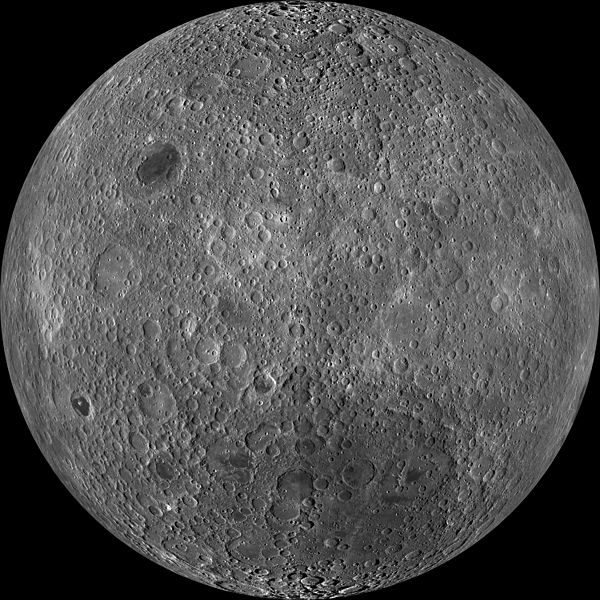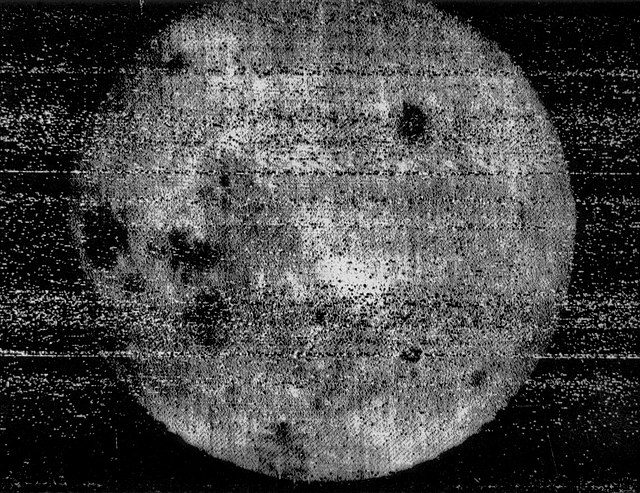Rowland is a large lunar impact crater that is located in the northern part of the Moon, on the far side from the Earth. This is an old, worn formation that is overlain by a number of smaller craters. The most notable of these is Rowland Y, which is attached to the inner wall along the north-northwestern rim. Additional smaller craters are attached to the inner wall along the southeastern and south-southwestern rims, the latter being designated Rowland N. Rowland C forms a double crater with a smaller, bowl-shaped formation in the eastern part of the floor.
Clementine mosaic
Mosaic of oblique Lunar Orbiter 5 images, facing northwest
Another oblique view from Lunar Orbiter 5, facing west
The far side of the Moon is the lunar hemisphere that always faces away from Earth, opposite to the near side, because of synchronous rotation in the Moon's orbit. Compared to the near side, the far side's terrain is rugged, with a multitude of impact craters and relatively few flat and dark lunar maria ("seas"), giving it an appearance closer to other barren places in the Solar System such as Mercury and Callisto. It has one of the largest craters in the Solar System, the South Pole–Aitken basin. The hemisphere has sometimes been called the "dark side of the Moon", where "dark" means "unknown" instead of "lacking sunlight" – each location on the Moon experiences two weeks of sunlight while the opposite location experiences night.
Detailed view with Mare Moscoviense visible, by the Lunar Reconnaissance Orbiter (LRO)
The 7 October 1959 image by Luna 3, which revealed for the first time the far side of the Moon. Clearly visible is Mare Moscoviense (top right) and a mare triplet of Mare Crisium, Mare Marginis and Mare Smythii (left center).
The far side of the Moon, with Mare Marginis and Mare Smythii visible, photographed by Apollo 16 in 1972. It is much more cratered than the near side of the Moon.
The first panorama from the far side of the Moon taken by Chang'e 4







